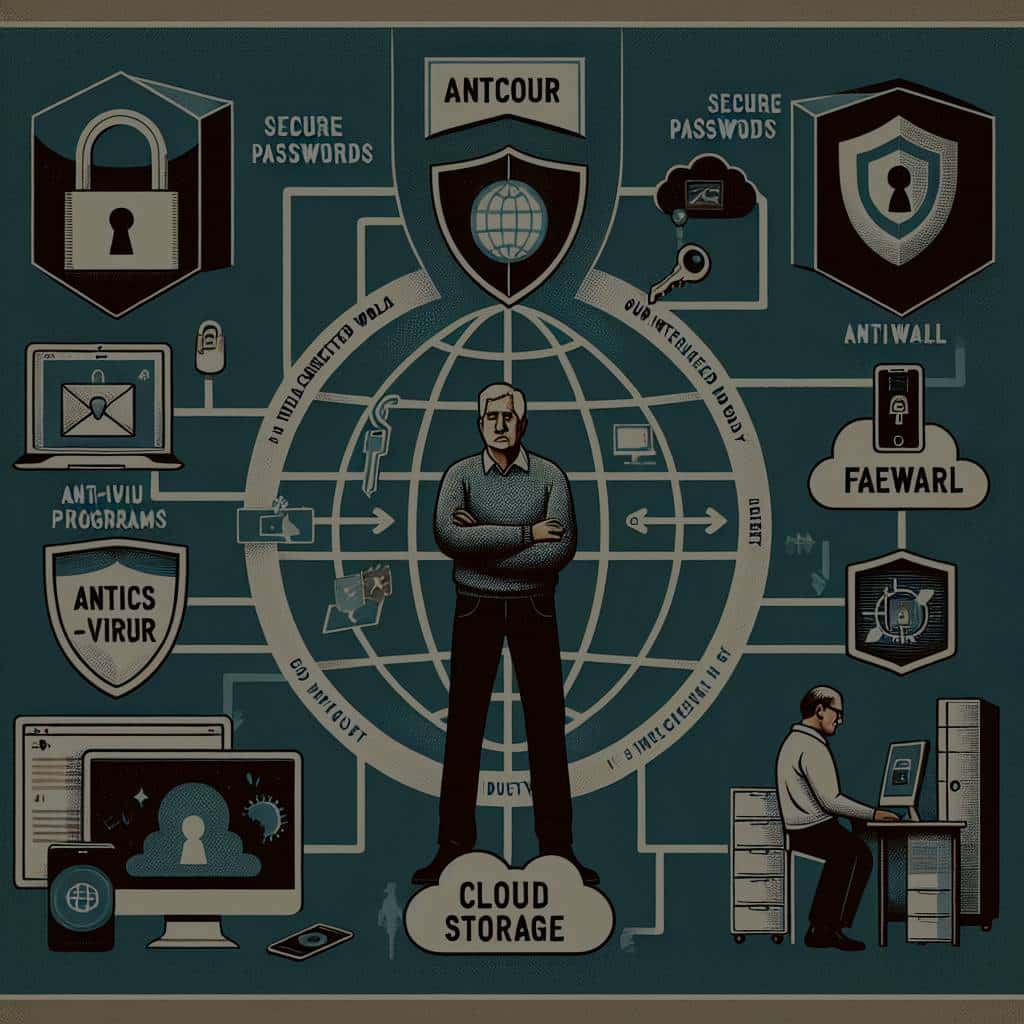How to Protect Your Digital Identity in an Increasingly Connected World?

In this digital age, protecting your online identity has become paramount. The rapid growth of technology has brought about a surge in cyber theft and data breach incidents. To maintain your privacy and protect sensitive data, it’s essential to understand how to safeguard your online identity. This article will provide you with comprehensive insights on securing your digital identity, from password security, account access regulations to email security, and social media privacy.
Understanding Your Digital Identity
Your digital identity is a collection of data and personal information available online that represents you. This information can include your name, email address, social media profiles, and much more. With the increasing dependence on digital platforms, your online identity has become as significant as your real-life identity. It’s crucial to understand that just as you would protect your physical belongings, you should also secure your digital assets.
Additional reading : Essential apron styles for every chef
Why Protection is Essential?
The rise in cyber theft has led to an increase in identity fraud cases, making it crucial for you to protect your online identity. Cybercriminals can misuse your personal data and compromise your privacy. They can gain access to your financial accounts, make unauthorized transactions, damage your reputation, or even use your identity for illegal activities. Hence, safeguarding your digital identity is a matter of utmost importance.
Password Security
Password security is one of the fundamental aspects of protecting your digital identity. Passwords are the primary line of defense against unauthorized access to your accounts. However, creating and managing secure passwords isn’t necessarily straightforward.
This might interest you : Discover top real estate properties in terrebonne with françois pitre
Creating Strong and Secure Passwords
To create a strong password, you should use a mix of uppercase and lowercase letters, numbers, and special characters. It’s recommended to avoid using personal information such as your name, birthdates, or common words. You can consider using a password generator to create random and complex passwords.
Managing Your Passwords
Remembering multiple complex passwords can be challenging. Therefore, you should consider using a password manager, a secure tool that stores all your passwords. This tool encrypts your passwords, which means only you can access them. Plus, it can auto-fill your passwords on websites, making it easier and faster for you to log in.
Email Security
Your email is a critical component of your digital identity. It’s often linked to your online accounts and can contain sensitive information. Therefore, securing your email is an integral part of protecting your online identity.
Protecting Your Email
To secure your email, you should employ strong passwords and enable multi-factor authentication, which adds an extra layer of security by requiring more than one method of authentication. Be wary of phishing emails that attempt to trick you into revealing your password or personal information. Regularly update your email software to benefit from the latest security enhancements.
Protecting Your Social Media Privacy
Your social media accounts can be a treasure trove of information for cybercriminals. Therefore, it’s critical to take steps to protect your privacy on these platforms.
Enhancing Social Media Security
Firstly, scrutinize your privacy settings on each platform. These settings determine who can view your posts and personal information. Regularly review these settings, as they can change when platforms update their policies.
Secondly, limit the amount of personal information you share on social media. The more you share, the easier it is for thieves to steal your identity.
Lastly, be mindful of who you connect with. Cybercriminals often create fake profiles to access personal information. If you don’t recognize a friend request or follower, it’s best to ignore it.
Ensuring Robust Authentication Practices
Strong authentication practices are the key to safeguarding your digital identity. They help to verify that you are the person you claim to be, preventing others from accessing your accounts.
Multi-Factor Authentication
Multi-factor authentication (MFA) provides an extra layer of protection. In addition to your password, MFA requires one or more additional verification methods. It’s advisable to enable MFA wherever possible, especially for critical accounts such as your email and financial accounts.
Biometric Authentication
Biometric authentication uses unique physical or behavioral characteristics, like fingerprints or voice patterns, to verify your identity. It offers a higher level of security than traditional passwords. More and more devices and platforms are incorporating biometric authentication methods, and you should take advantage of this where available.
In conclusion, protecting your digital identity is not only imperative but it’s also your responsibility. The steps highlighted above will go a long way in ensuring you maintain a secure online presence. By being proactive, you can stay one step ahead of cybercriminals.
Protecting Your Identity on Social Networks
Social networks have become an integral part of our modern lives. They allow us to connect with friends, share moments, and even do business. However, they have also become a hotbed for identity theft. Thus, protecting your digital identity on social networks has become a task of great importance.
The Role of Social Networks in Your Digital Identity
Your presence on social networks forms a considerable part of your digital identity. From your profile picture, bio, location, to the posts you share and the comments you make, all these contribute to your digital footprint. Cybercriminals can use this information to impersonate you or crack your security questions, leading to identity theft.
How to Protect Your Identity on Social Networks
To protect your identity on social networks, you need to be cautious about the information you share. Avoid posting sensitive details like your home address, phone number, or information that can be used to answer your security questions.
Regularly review and adjust your privacy settings to control who sees your posts and personal details. Also, be wary of friend requests or messages from strangers or suspicious accounts.
Consider using a password manager to create and store strong, unique passwords for each of your social media accounts. This reduces the risk of one compromised account leading to a domino effect on your other accounts.
Finally, keep your social media apps updated. Developers often release updates to patch security vulnerabilities, and having the latest version ensures you are benefiting from these improvements.
Conclusion: Your Role in Protecting Your Digital Identity
In the modern, interconnected world, protecting your digital identity is no longer optional; it’s a necessity. From the passwords you create to the details you share on social media, every action can either safeguard or put your online identity at risk. The protection of your digital identity isn’t a one-time activity, but a continuous process.
The responsibility of protecting your digital identity primarily lies with you. By practicing good password hygiene, being cautious with the personal data you share online, and using secure and updated platforms, you can significantly reduce the risk of identity theft.
Remember to leverage advanced security features like multi-factor authentication and biometric authentication, which offer an extra layer of protection.
In the end, protecting your digital identity is much about being informed, vigilant, and proactive. Staying updated on the latest cybersecurity threats and protection measures can go a long way in safeguarding your online identity.
In this digital age, your digital identity is as significant as your real-life identity. Protect it with the same seriousness you would protect your physical assets.
